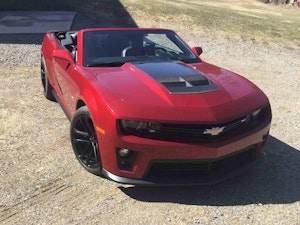Media | Articles
This is a vintage Subaru’s purpose
It’s difficult to mention the name Subaru without thinking “rally racing.” Rally-prepped WRX hatchbacks can be found on rally circuits all over the world, and fans of that racing genre drive them everywhere snow and wet weather prevail.
But long before boy racers and rally stars caught the Subie bug, Fuji Heavy Industries – Subaru’s parent company – built boxy, practical, underpowered people haulers that looked a lot like the economy cars offered by other contemporary Japanese automakers. There was, however, a marked difference: four-wheel drive. That feature made them shine in areas where a car needed to be both fuel efficient and able to handle bad weather.
A mid-‘80s Subaru is something of an anomaly. It lacks the pizazz of modern, rally-inspired Subarus, and is considered by many as being too schlubby a car to join the ranks of classics. But a classic it is – if only according to age and the fact that most of them have long since rusted into oblivion. This anemic, unloved de facto classic is also a rally car of a sort.
After scouring the Phoenix Craigslist ads for an entire year, I was able to find a mint condition 1987 GL 4WD wagon worthy of preservation and, I reasoned, all sorts of driving. Road trips were a given (for starters, my wife and I had to drive it back to the East Coast from Arizona), but it wanted something more involved. I naively tried to display the car in Brooklyn’s summer classic car show circuit a couple of times. It got no love, though. This sort of car was designed with utilitarian purpose in mind, so it called for something more practical.
When I discovered time-speed-distance rallying, it was clear that the Subaru was just what the contest organizers had had in mind – or such was my reasoning on the matter. To be clear, a time-speed-distance rally isn’t like the sort of rally in which souped-up Subarus rip through the woods at breakneck speeds. It’s a math nerd’s dream, more in line with the abilities of a geriatric Subaru like the GL. You have a set amount of time to get from point A to point B, point B to point C and so on. If you’re early or late, you get demerit points added to your overall score. The closer your score is to zero, the better.
Marketplace
Buy and sell classics with confidence
This is more difficult than it sounds, but a gutless old car is ideal, because you can be sure that you won’t overdo it on the speed angle. Although each leg of the competition – it isn’t a race, per se – is run at or below the posted speed limit, driving over dirt roads in the Vermont woods can feel pretty fast at times, especially when the speed limit doesn’t seem to correspond with the road’s curves and banking. Even so, the driver in such a rally can be reasonably certain that the car isn’t going to sustain damage in a horrible wreck.
Armed with the GL and a retired actuarial accountant, who served as the number-crunching navigator, I drove along graded dirt tracks and across covered wooden bridges amid Vermont’s bucolic scenery in the 50th running of the SCCA sanctioned Covered Bridge Rally. Fall colors contrasted with iron gray skies, stabbed at times by dazzling rays of fall sunshine, but our focus was on the speed, on arriving on time.
The Subaru, which had been spurned among the ’50s and ’60s-era classics shown shown off at Brooklyn’s car shows, was a star in the North Woods. Even though a New England TSD rally isn’t a speed event, the Covered Bridge Rally attracted plenty of people with World Rally Championship-inspired Subarus and Volvos displaying big driving lights mounted on their front bumpers. This crowd was the type to appreciate a vintage Subaru; a car that had, in its day, been ubiquitous on the region’s often snow-covered roads.
A vintage Subaru may not bask in the light of widespread adoration enjoyed by tail-finned cruisers and muscle cars, but in the Northeast and Pacific Northwest regions in particular, it’s the sort of car that will attract nostalgic eyeballs. Driving one in a timed event, in an environment that helped Fuji establish its foothold in the North American market, was a great way to see why so many people had bought these cars to begin with. Quite simply, they’re fun.










